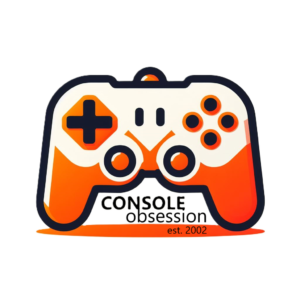Metal Gear Solid: Peace Walker PSP Review
Publisher – Konami – Developer – Kojima Productions – Genre – Stealth – Players – 1-4 – Age Rating – 15+ – Other console/handheld formats – N/A
Metal Gear Solid: Peace Walker may be a portable game but at one point in time it was Metal Gear Solid 5, so obviously it’s always been intended to be an important addition to the franchise. It’s also the first smaller scale game in the series for Hideo Kojima to be involved in and, for this reason alone, it can sit quite confidently next to its big brothers with its head held high.
In regards to its narrative, Metal Gear Solid: Peace Walker is set in 1974 during the Cold War and, much like Metal Gear Solid 3 and Portable Ops before it, it focuses on not Solid Snake, but his father and enemy, Big Boss, which grants further richness to the history of Kojima Productions’ overblown universe.
For Metal Gear standards, it’s actually a rather understated story that much of the time is lacking the often nonsensical but likeable OTT nature of other entries in the series. But it’s still a compulsive enough driving point, which is all well and good as Kojima’s penchant for lengthy cut scenes to tell his story remains.
Those cut scenes are largely represented by the same comic book style used to such stunning effect in Portable Ops, and perhaps there’s even a glimmer of a chance that they’re distinctive and well drawn enough to even hold the attention of cut scene naysayers, even if, as their minds begin to wander, the actual dialogue goes unheard. Some cut scenes even have a limited level of interaction to them, which will please those that have previously found the series lacking in involvement.


You’d be mistaken for thinking that this is a one eyed Solid Snake, easy mistake though.
Metal Gear Solid: Peace Walker is largely set in jungle environments, which brings to mind Metal Gear Solid 3 and the visuals and sound are both some of the best uses of the PSP’s might, really playing their part in drawing you into this tropical world.
In regards to controls, none of the three schemes on offer are perfect, though after you get used to shifting the camera around with the face buttons, the default method is reasonable enough, though it’s yet another game on the system that makes one wonder why Sony didn’t include an additional nub on the face of the PSP for smoother play.
Mechanically, it’s Kojima Productions usual brand of stealth based gameplay: hiding in cardboard boxes, tranquilizing enemy soldiers, and using CQC to give your enemies a nasty, fuzzy head, amongst other things. Enemies behave in much the same manner, too, although their somewhat short-sighted AI actually functions better in smaller environments, so it’s actually more proficient here than it is in MGS4. Something absent that is missed however are checkpoints, which results in death on some of the lengthier missions being infuriating, though thankfully it’s merciful enough to have boss fights as self-contained missions.
A major addition to the tried and tested MGS formula is two to four player co-op play, of which gives you the chance to play many of the missions with up to three other people. There are many actions exclusive to co-op: fallen players can be revived by others, players can trade items, two players close to each other will share health and can move and shoot in tandem with one another, and that all important cardboard box hasn’t been ignored either, allowing multiple players to conceal themselves under one, amongst other actions.
It takes the franchise in an interesting new direction and more importantly it all works well, though the addition of co-op actually comes as a bit of a detriment to the solo play, with some bosses giving you the sense that they were designed to be taken down by more than one measly player, though, with a bit of additional effort, their defeat is still possible. Further disappointment comes from the fact that the encounters simply don’t have the crazy personality that MGS bosses often do, and few fans will be able to argue that it doesn’t feel as if something is missing because of this.


This is an effective method of getting by unseen, but isn’t as amusing as hiding in a cardboard box.
More positively, much has been carried over from its PSP predecessor, Portable Ops, though refined this time around. Enemies can still be captured, but it’s no longer the potentially tedious process of dragging their unconscious bodies to the back of a truck , instead it’s now pleasingly instantaneous, simply using a balloon to send them to your base, Outer Heaven.
Much like Portable Ops, captured enemies can be put to work in and out of your base and there’s a certain level of compulsion to building your army. Some fight, some prepare food to keep the morale of your army from plummeting and some gather Intel. Placing so many soldiers within fields will level the whole team up in that respective field, making them more effective and often allowing you to research new weapons and items. With Outer Ops your squad can also be sent out on missions, gaining you additional funds and items in the process.
Peace Walker may have some flaws that are hard to overlook, of which leaves a negative impact on certain areas of the game and, even with the new additions, it’s still very much MGS, so obviously it’s hardly going to make friends with those that previously haven’t got on well with the series. However, on top of the well established MGS framework, the game brings several well executed and interesting twists to the formula, making it one of the most inventive and refreshing entries in the series to be released in quite some time.
8/10







